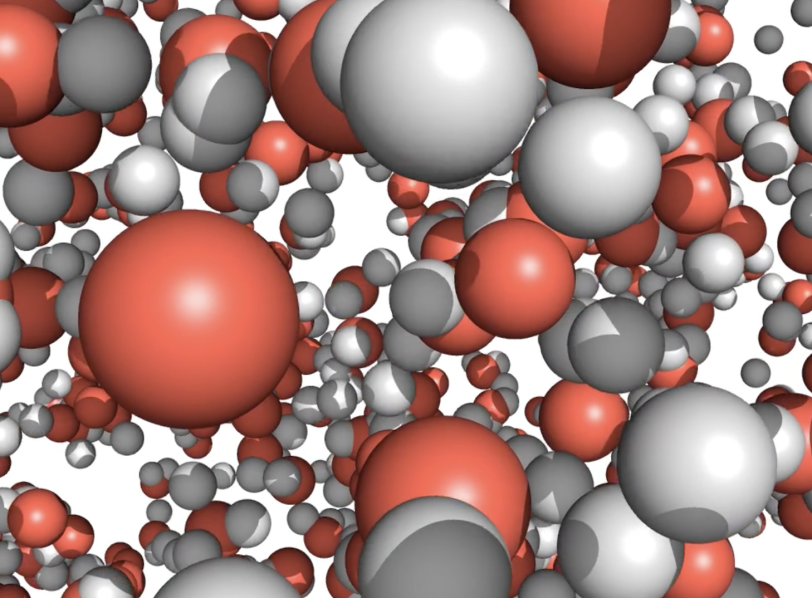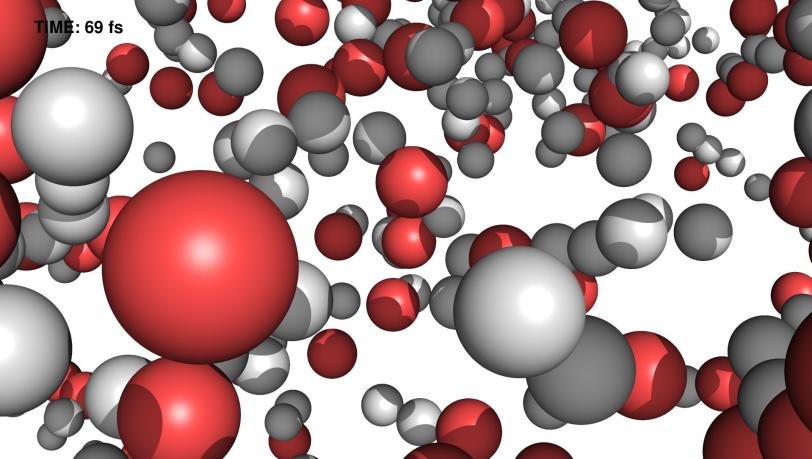Scientists Turn X-ray Laser Into World’s Fastest Water Heater
Experiments at SLAC heated water from room temperature to 100,000 degrees Celsius in less than a millionth of a millionth of a second, producing an exotic state of water that could shed light on Earth’s most important liquid.
Scientists have used a powerful X-ray laser at the Department of Energy’s SLAC National Accelerator Laboratory to heat water from room temperature to 100,000 degrees Celsius in less than a tenth of a picosecond, or millionth of a millionth of a second.
The experimental setup, which can be seen as the world's fastest water heater, produced an exotic state of water from which researchers hope to learn more about the peculiar characteristics of Earth's most important liquid. The observations also have practical use for probing biological and many other samples with X-ray lasers.
The research team from Germany’s Deutsches Elektronen-Synchrotron (DESY), Uppsala University in Sweden and SLAC reported its findings today in the Proceedings of the National Academy of Sciences.
The researchers used SLAC’s Linac Coherent Light Source ( LCLS) X-ray free-electron laser to shoot extremely intense and ultrashort flashes of X-rays at a jet of water.
“It is not the usual way to boil your water,” said Carl Caleman of the Center for Free-Electron Science (CFEL) at DESY and Uppsala University. “Normally, when you heat water, the molecules will just be shaken stronger and stronger.” On the molecular level, heat is motion – the hotter the temperature, the faster the motion of the molecules. This can be achieved, for example, via heat transfer from a stove, or more directly with microwaves that make the water molecules swing back and forth ever faster in step with an electromagnetic field.
In this experiment, “Our heating is fundamentally different,” Caleman said. “The energetic X-rays punch electrons out of the water molecules, thereby destroying the balance of electric charges. So, suddenly the atoms feel a strong repulsive force and start to move violently.” In less than 75 femtoseconds – that's 75 millionths of a billionth of a second, or 0.000000000000075 seconds – the water goes through a phase transition from liquid to plasma. A plasma is a state of matter where the electrons have been removed from the atoms, leading to a sort of electrically charged gas.

media:remote_video:f8a6fcb1-b334-425b-a95e-7857f8a4d46b
“But while the water transforms from liquid to plasma, it still remains at the density of liquid water, as the atoms didn't have time to move significantly yet,” said co-author Olof Jönsson from Uppsala University. This exotic state of matter is nothing that can be found naturally on Earth, he added: “It has similar characteristics as some plasmas in the sun and in the gas giant Jupiter, but has a lower density. Meanwhile, it is hotter than Earth's core.”
The scientists used their measurements to validate simulations of the process. Together, the measurements and simulations allowed them to study this exotic state of water in order to learn more about water's general properties.
“Water really is an odd liquid, and if it weren't for its peculiar characteristics, many things on Earth wouldn't be as they are, particularly life,” Jönsson said. Water displays many anomalies, including its density, heat capacity and thermal conductivity. It is these anomalies that will be investigated within the future Center for Water Science (CWS) planned at DESY, and the results obtained at LCLS are of great importance for the activities there.
Apart from its fundamental significance, the study also has immediate practical significance. X-ray lasers are often used to investigate the atomic structure of tiny samples. “It is important for any experiment involving liquids at X-ray lasers,” said co-author Kenneth Beyerlein from CFEL. “In fact, any sample that you put into the X-ray beam will be destroyed in the way that we observed here. If you analyze anything that is not a crystal, you have to consider this.”
The measurements show almost no structural changes in the water up to 25 femtoseconds after being hit with an X-ray pulse. But at 75 femtoseconds, changes are already evident.
“The study gives us a better understanding of what we do to different samples,” explained co-author Nicusor Timneanu from Uppsala University, one of the key scientists developing the theoretical model the research team used. “Its observations are also important to consider for the development of techniques to image single molecules or other tiny particles with X-ray lasers.”
LCLS is a DOE Office of Science user facility. SLAC researchers Roberto Alonso-Mori, Andrew Aquila, Jason E. Koglin, Marc Messerschmidt, Dimosthenis Sokaras, Garth J. Williams and Sébastien Boutet contributed to this study, along with Stefan Hau-Riege of DOE’s Lawrence Livermore National Laboratory.
This article is based on a press release from DESY.
Contact
For questions or comments, contact the SLAC Office of Communications at communications@slac.stanford.edu.
SLAC is a multi-program laboratory exploring frontier questions in photon science, astrophysics, particle physics and accelerator research. Located in Menlo Park, Calif., SLAC is operated by Stanford University for the U.S. Department of Energy's Office of Science.
SLAC National Accelerator Laboratory is supported by the Office of Science of the U.S. Department of Energy. The Office of Science is the single largest supporter of basic research in the physical sciences in the United States, and is working to address some of the most pressing challenges of our time.






